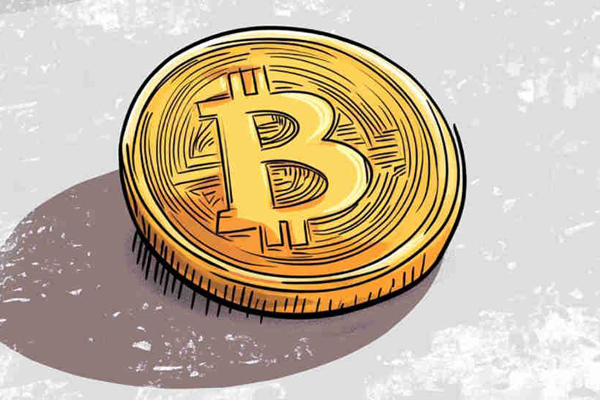As the trade war escalates, can Bitcoin hold the $70,000 mark?

The Sino-US trade friction has escalated into an "economic nuclear war".
The bottom-fishing failed, and the market did not wait for good news. In the early morning of today, the White House press secretary said that the additional tariffs of 104% on China had taken effect at noon Eastern Time, and the global financial market plunged again.
On April 3, when Trump's tariff policy was introduced, US Treasury Secretary Bensont issued a statement advising all countries not to take retaliatory actions and wait to see if there were any negotiations before April 9. Even the "fake news" drama was staged again, hoping that Trump might be willing to negotiate on the trade barriers he imposed on multiple countries and specific products, and rebound, so that the global capital market would "revive" in a short time.
But after several days of game, the market did not wait for good news. From 10% at the beginning of the year to 20% in March, and then to 34% in early April, now with the superposition of 50% "retaliatory increase", the Sino-US trade friction has escalated into an "economic nuclear war".
China and the United States are in a trade war again. Can the stock market hold up?
Since the Trump administration announced a new round of tariff policies last week, the international capital market has suffered severe shocks, with the U.S. stock market bearing the brunt. As of the close of Tuesday, the S&P 500 index fell below 5,000 points for the first time in nearly a year, down 18.9% from its high on February 19, just one step away from the "technical bear market" threshold of a 20% drop. It is estimated that the market value of the S&P 500 index components evaporated by $5.8 trillion in four trading days, setting a record for the worst four-day decline since the index was established in the 1950s.
At the same time, the U.S. tariff policy triggered a chain reaction in the global capital market. According to Bloomberg statistics, since Trump proposed the so-called "reciprocal tariffs" on April 3, the total market value of global stocks has shrunk by $10 trillion, slightly more than half of the EU's GDP. American technology giants have become the hardest hit areas, with the market value of seven major technology companies such as Apple and Microsoft evaporating a total of $1.65 trillion. Among them, Apple's stock price plummeted by nearly 23% in four days due to its high dependence on overseas supply chains, creating the largest single-week decline since the outbreak of the epidemic in 2020.
Previously, many opinion leaders in the crypto circle firmly believed that crypto asset classes would not be affected by traditional tariffs because their transactions do not need to pass through borders and customs. They believe that in the face of a new round of mercantilism and trade barriers in the world, the value proposition of cryptocurrencies is more prominent. Strategy founder Michael Saylor wrote on April 3 that "Bitcoin has no tariffs."
However, the total market value of cryptocurrencies has fallen by 35% from its peak in December 2024, from $3.9 trillion to $2.5 trillion. The "Crypto Fear and Greed Index" shows 17, which is in the extreme panic range, indicating pessimistic market sentiment.
Last night, Bitcoin fell below $75,000 again. At the same time, BTC's market share continued to rise, the altcoin market was terrible, and Ethereum fell below $1,400 again.
In the past 12 hours, the crypto market has accumulated a total of $243 million in liquidation, including $192 million in long positions and $51.03 million in short positions.
The continued decline in Bitcoin prices will even force Strategy, which has been buying and buying, to sell Bitcoin. According to the 8-K form submitted by Strategy to the SEC on April 7, if the price of Bitcoin continues to fall, Strategy may be forced to sell its Bitcoin holdings to repay debts, breaking Michael Saylor's promise to "never sell Bitcoin."
Since Trump won the election in November 2024, Strategy has bought 275,965 BTC ($25.73 billion) at an average price of $93,228, and this part has lost $4.6 billion.
Pessimistic expectations intensify, what do analysts think of the current market
In the past week, several Wall Street banks, including Goldman Sachs and JPMorgan Chase, warned that if the trade war continues to escalate, the US and even the global economy may fall into recession this year, which will further weaken the attractiveness of financial markets.
But the White House team is cheering victory. "It's bottoming out now, really bottoming out," Peter Navarro, Trump's chief trade adviser, said on Fox News on Monday night. "The next turn will be reversed, and those companies in the S&P 500 that first shifted production back to the United States will lead the recovery, which will happen soon. The Dow will be 50,000 points, I dare to guarantee it, and there will be no recession." However, Navarro's optimistic remarks were not recognized by JPMorgan Chase CEO Jamie Dimon, who warned in his annual letter to shareholders on Monday that Trump's tariffs will push up prices, drag down the global economy, and weaken the United States' global position by undermining its alliance system. Even some of Trump's allies, including Elon Musk and Bill Ackman, have recently warned that the logic of this tariff policy is seriously flawed and is the wrong route. Crypto analyst Phyrex believes that from the perspective of the Fed's behavioral logic, unless inflation falls significantly, even a "defensive rate cut" will be difficult to implement quickly. The real watershed may be when the US GDP data is released at the end of April. From the perspective of the crypto market, BTC's turnover rate fell today. URPD data showed that even if the price fell below $77,000, investors in the 93,000-98,000 range hardly reduced their positions, which shows that the current selling pressure does not come from high-level holders, and there is no panic selling at the top. The on-chain structure is relatively healthy. As long as subsequent policies are no longer repeated frequently, BTC and risk markets may still have room for phased repairs.
As U.S. Treasuries no longer play the role of a safe haven, the 10-year Treasury yield has rebounded to around 4.3%, higher than the level at the end of March, pushing up the cost of mortgages and other types of loans. The 30-year Treasury yield closed at 4.76%, up nearly half a percentage point from Monday's lowest point. The spread between the U.S. two-year and ten-year Treasury yield curves widened to 48 basis points, the steepest level since May 2022.
Arthur Hayes, co-founder of BitMEX, wrote, "The Fed is running out of time and the situation is getting out of control. The previous stock market decline would lead to a decline in the 10-year U.S. Treasury yield, which is good for risky assets. The current stock market decline is accompanied by an increase in the 10-year U.S. Treasury yield, which is a bad thing. The market finally realized that if the dollar export revenue decreases, there will be no more buying of treasuries or stocks, and the game is over."
Pessimistic expectations are still strengthening. Trader Eugene wrote, "The introduction of global trade tariffs marks a change in the world order that has not been seen in more than 50 years. Free trade has been a key factor in driving productivity and economic growth, contributing to the world's largest long-term bull market in history. The shift from openness to a protectionist stance will have far-reaching consequences that will take years to gradually emerge unless Trump completely abandons his tariff plan. I think the possibility of this is very low. This will pose a considerable long-term resistance to global risk assets.
In terms of cryptocurrency, the recent structural decline in active developers may be the most worrying thing. In the last cycle, we could observe developer activity and feel comforted because we knew that our industry still benefited from long-term tailwinds. Fast forward 2-3 Years later, not only have we not produced anything particularly interesting or important, but the outlook for the future is even worse than it was then.
In the last cycle, we looked forward to the launch of ETFs and a better regulatory environment led by governments that support cryptocurrencies as the light at the end of the tunnel. Now that these have been achieved, but (once again) have failed to meet expectations, I don't see anything in the future that can allow cryptocurrencies to escape their natural "Ouroboros" (self-circulating, self-eating dilemma).
From a more macro perspective, the world situation is in a major change that has not been seen in a century. Dalio, billionaire hedge fund manager and founder of Bridgewater Fund, wrote that although the current market and economic focus on tariffs is important, deeper global issues should not be ignored. He pointed out that we are in the "classic collapse" stage of monetary, political and geopolitical order, which may only happen once in a lifetime, but has occurred many times in history.
Dalio suggested that we should not be distracted by short-term events such as tariffs, but should focus on the interaction of five major forces (economic, political, geopolitical, natural, and technological). Studying similar cycles in history (such as currency crises, etc.) helps predict the future.
"The current changes are part of a larger historical cycle. Tariffs are just a symptom. The real driving force is the structural collapse of the monetary, political and geopolitical order. Understanding the interaction of these forces and learning from historical experience can better prepare for the future."









